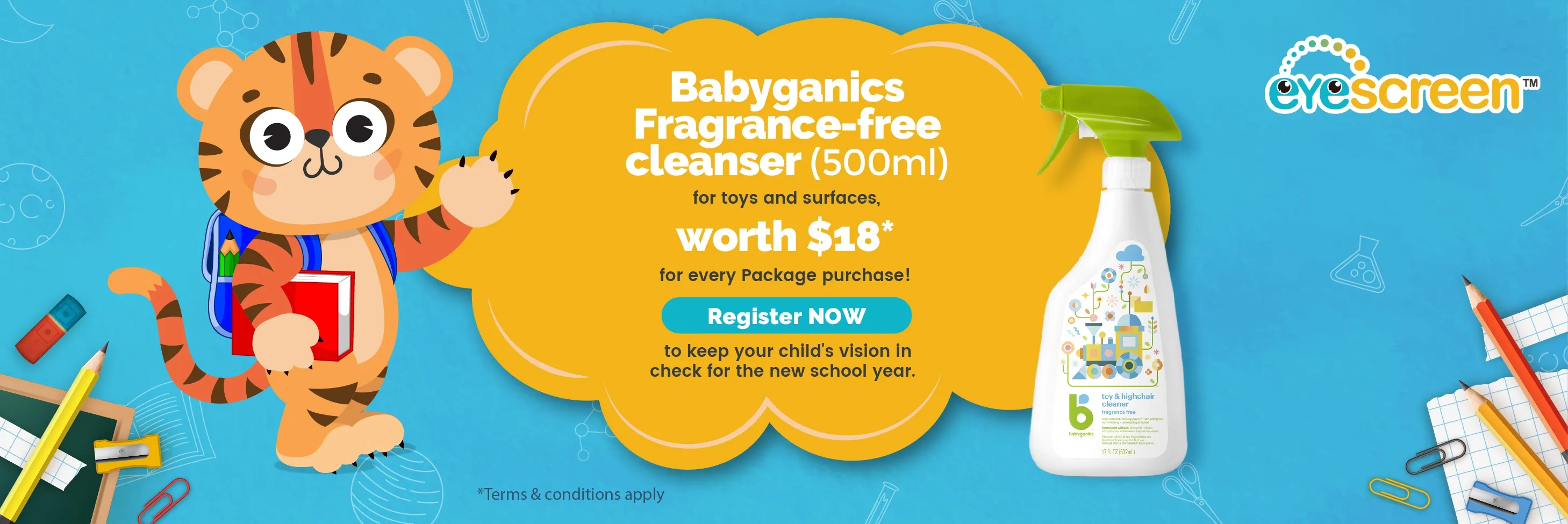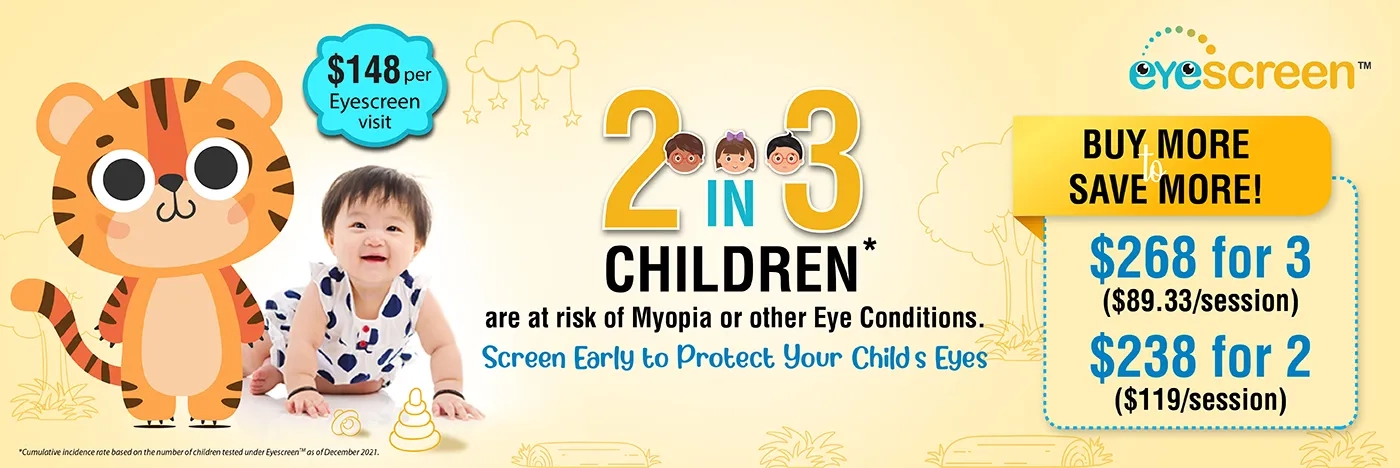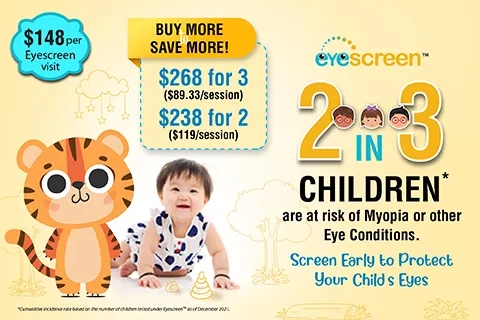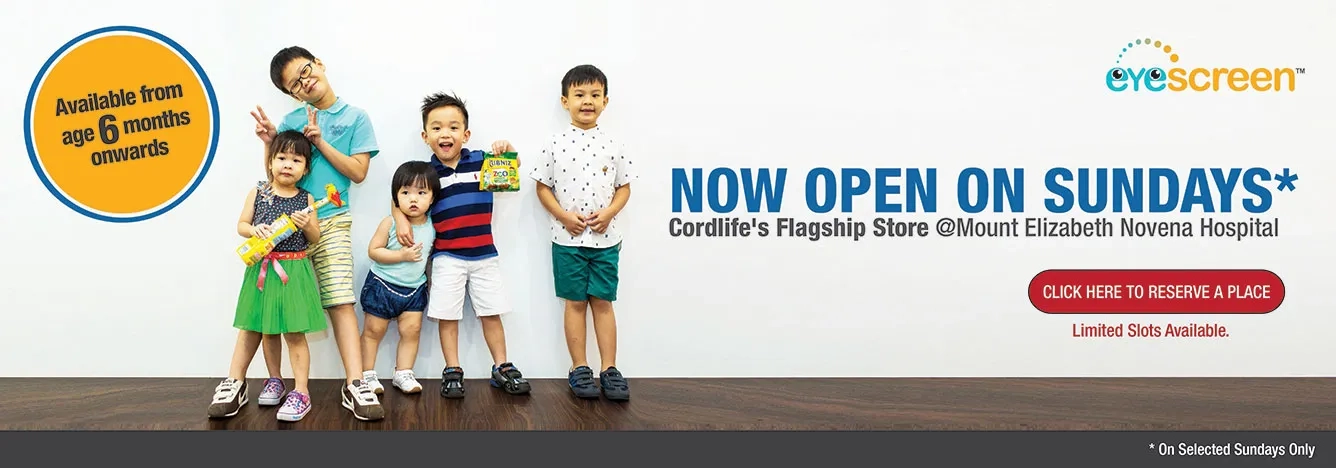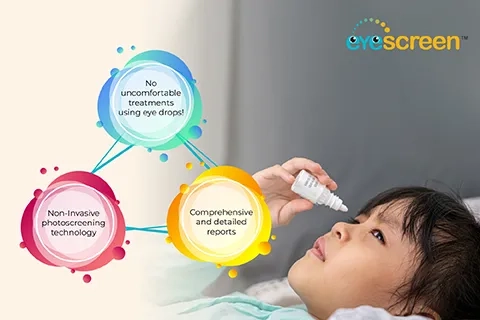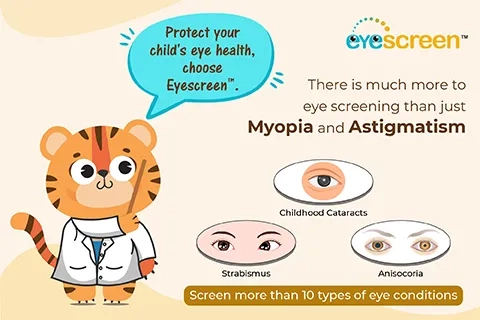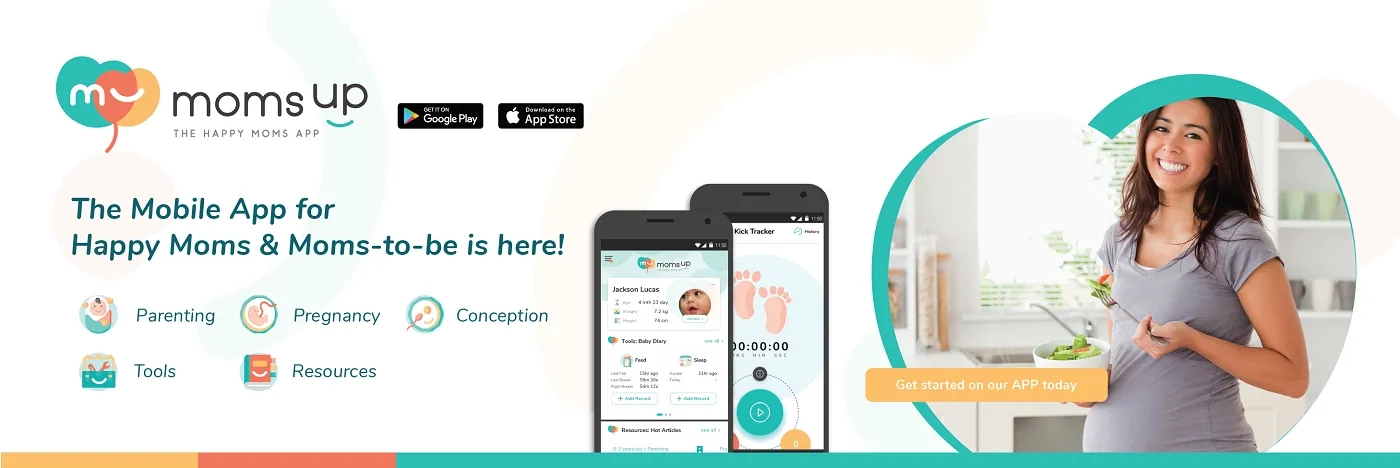

EyeScreen
Safeguarding your child's windows to the world
Early detection
The purpose of paediatric vision screening is to allow for the early detection of vision problems in children as young as 6 months old.
Early intervention
The earlier an eye problem is detected, the earlier the appropriate treatment could be recommended for your child to prevent permanent visual impairment.
Timely vision screening
The American Optometric Association (AOA) recommends a child to have his/her first vision screening between the age of 6 and 12 months even if no eye problem is apparent1.
Why should I have my infant / toddler’s eyesight checked?
Singapore is known as the myopia capital of the world. According to the latest Singapore Health Promotion Board (HPB) figures from 2011, about 16% of preschool children are short-sighted, a 7% increase from 20092. Frequent use of digital devices, such as smartphones and iPads, in young children may only serve to accelerate this trend.
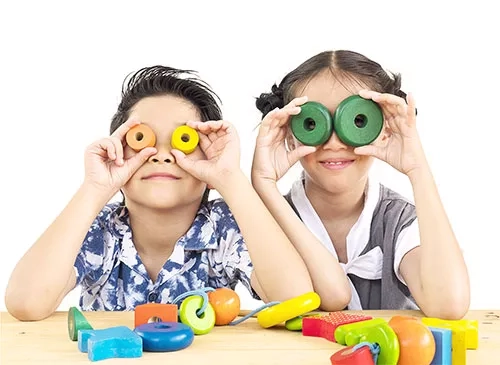
EyescreenTM enables the early detection of vision problems in your child, which if left untreated, may lead to permanent visual impairment.
Screen your child’s eyes before it is too late.
Who do we screen?
American Academy of Paediatrics (AAP) consider timely vision screening as being essential in infancy and childhood for the early detection and treatment of eye problems. We recommend first screening to take place in infancy, which is as early as 6 months old. Subsequent vision screening can be performed periodically on an annual basis and throughout childhood.

Infant as young as 6 months old
Toddlers
Pre-schoolers up till 6 years old
Children with intellectual disability, hyperactivity, autism spectrum disorders etc
What do we screen for?
Strabismus (Crossed eyes / Squints).
Pseudostrabismus
Amblyopia (Lazy eye)
Myopia
Hyperopia
Astigmatism
How do we screen?
Eyescreen™ is a speedy, safe and non-invasive screening that does not require any physical contact with your child or eyedrops to dilate the pupils. By following steps 1-2-3-4, Eyescreen™ is able to detect eye problems and hence, allowing effective treatment to be administered as early as possible
Step 1: Assess
Your child's vision
development will be assessed.
Step 2: Screen
Your child will be
photo-screened by our
paediatric optometrist.
Step 3: Further tests
Your child will be routed
for supplementary testing (optional)
if he or she is older.
Step 4: Result
You will receive screening report
on the spot after screening.
References
1Aoa.org. Accessed on 3 June 2015. http://www.aoa.org/patients-and-public/good-vision-throughout-life/childrens-vision/infant-vision-birth-to-24-months-of-age/infants-vision?sso=y
2 Astigmatism 'common' in kids with vision problems, Saturday (Oct 25, 2014). The Straits Times

